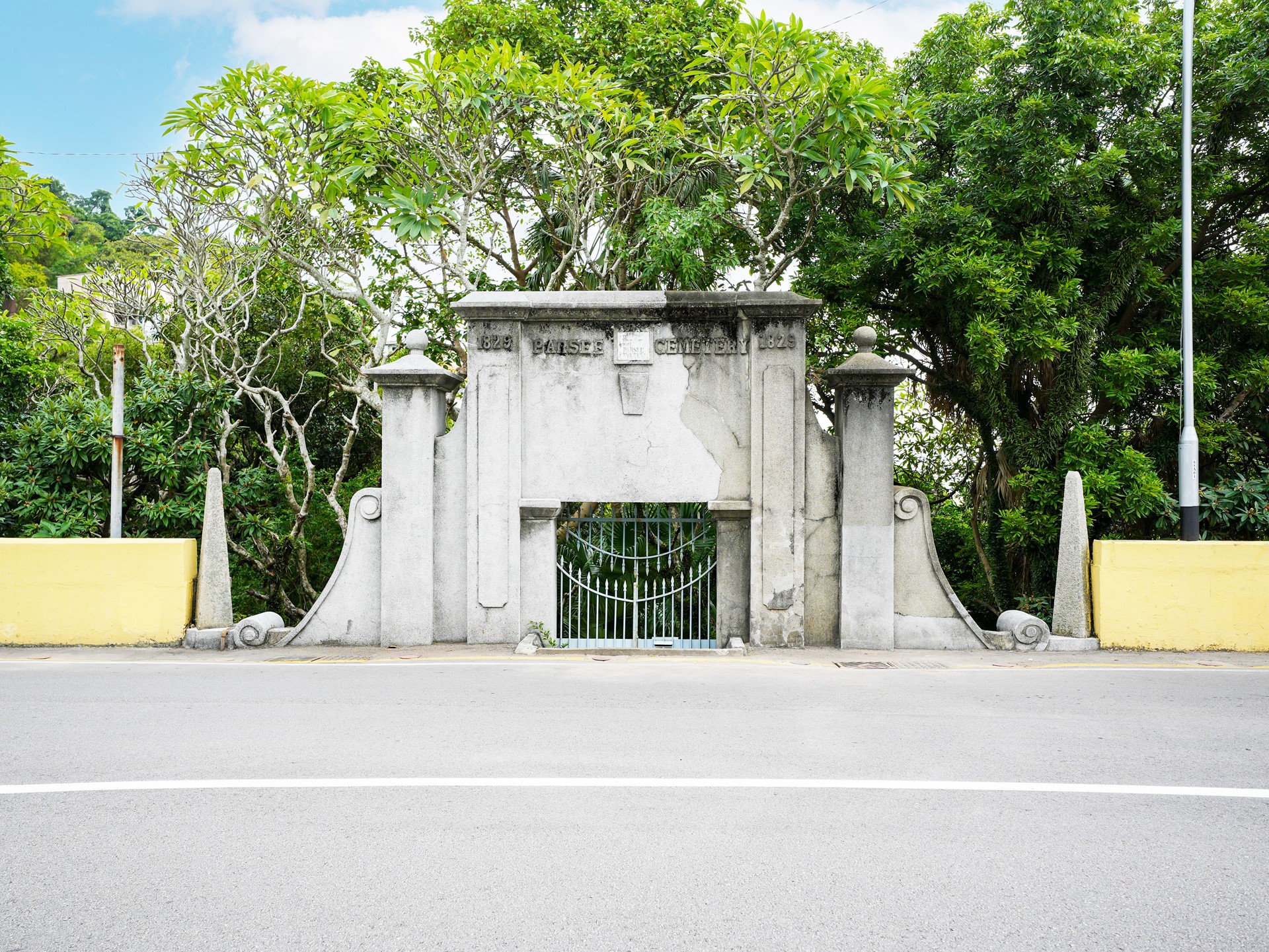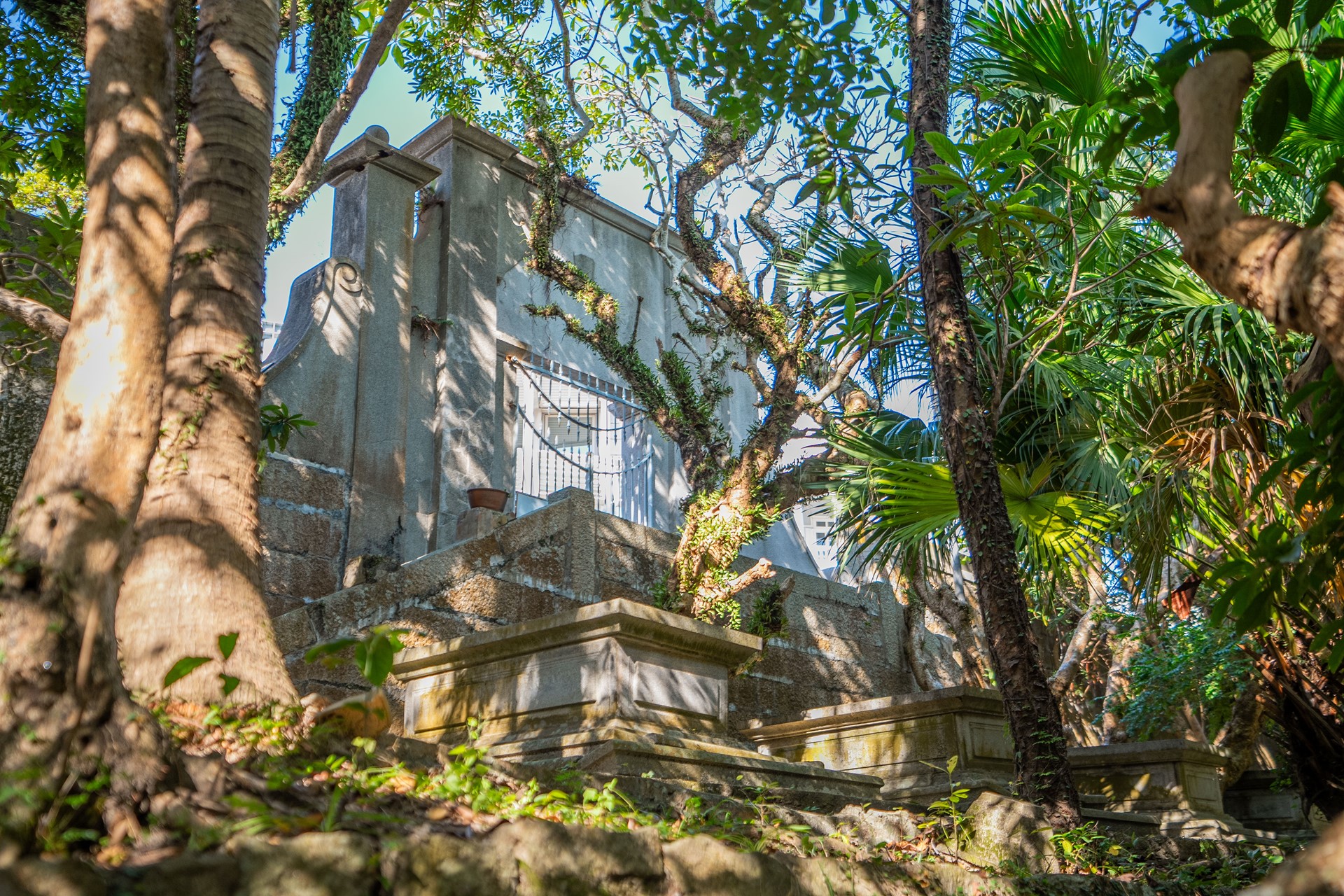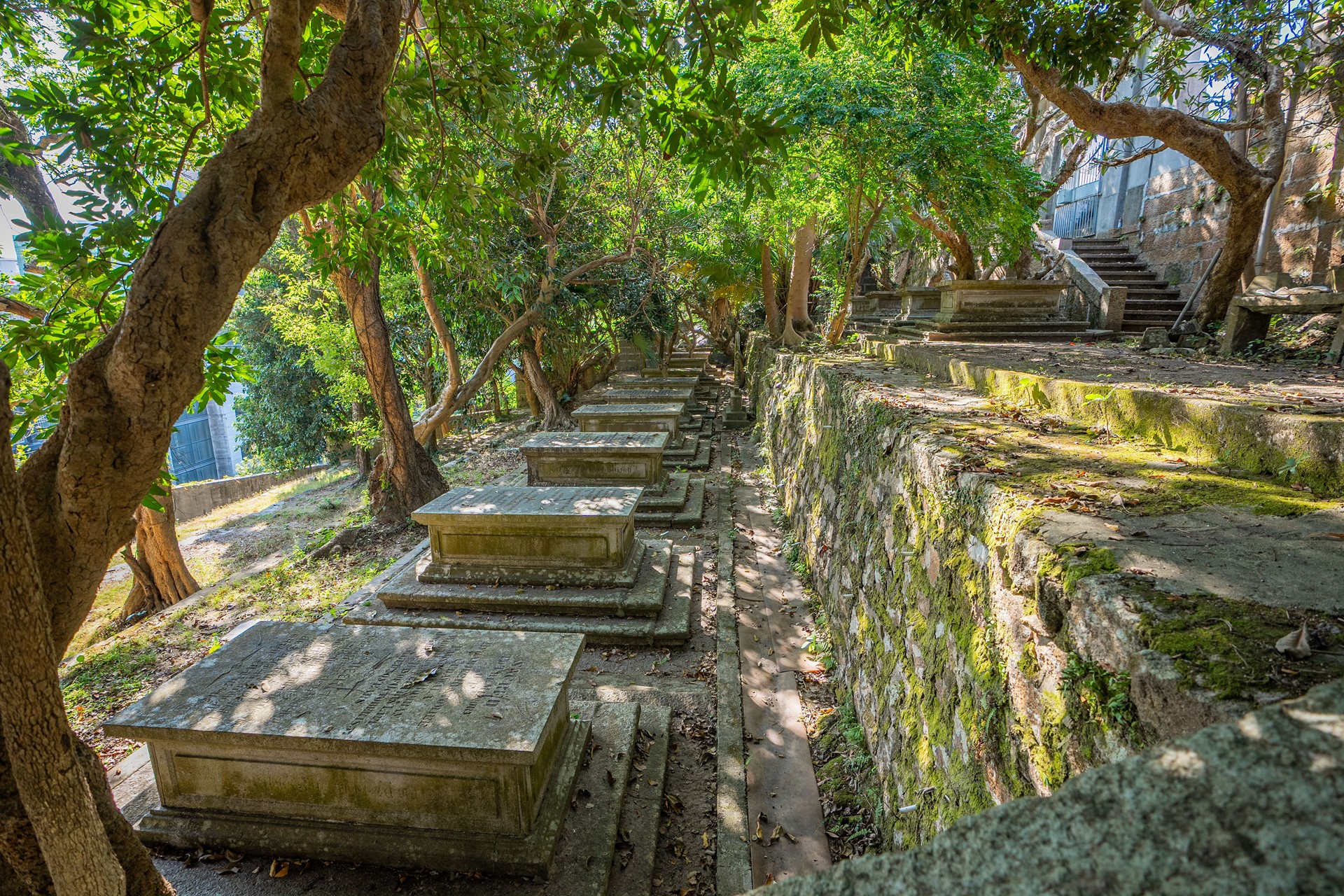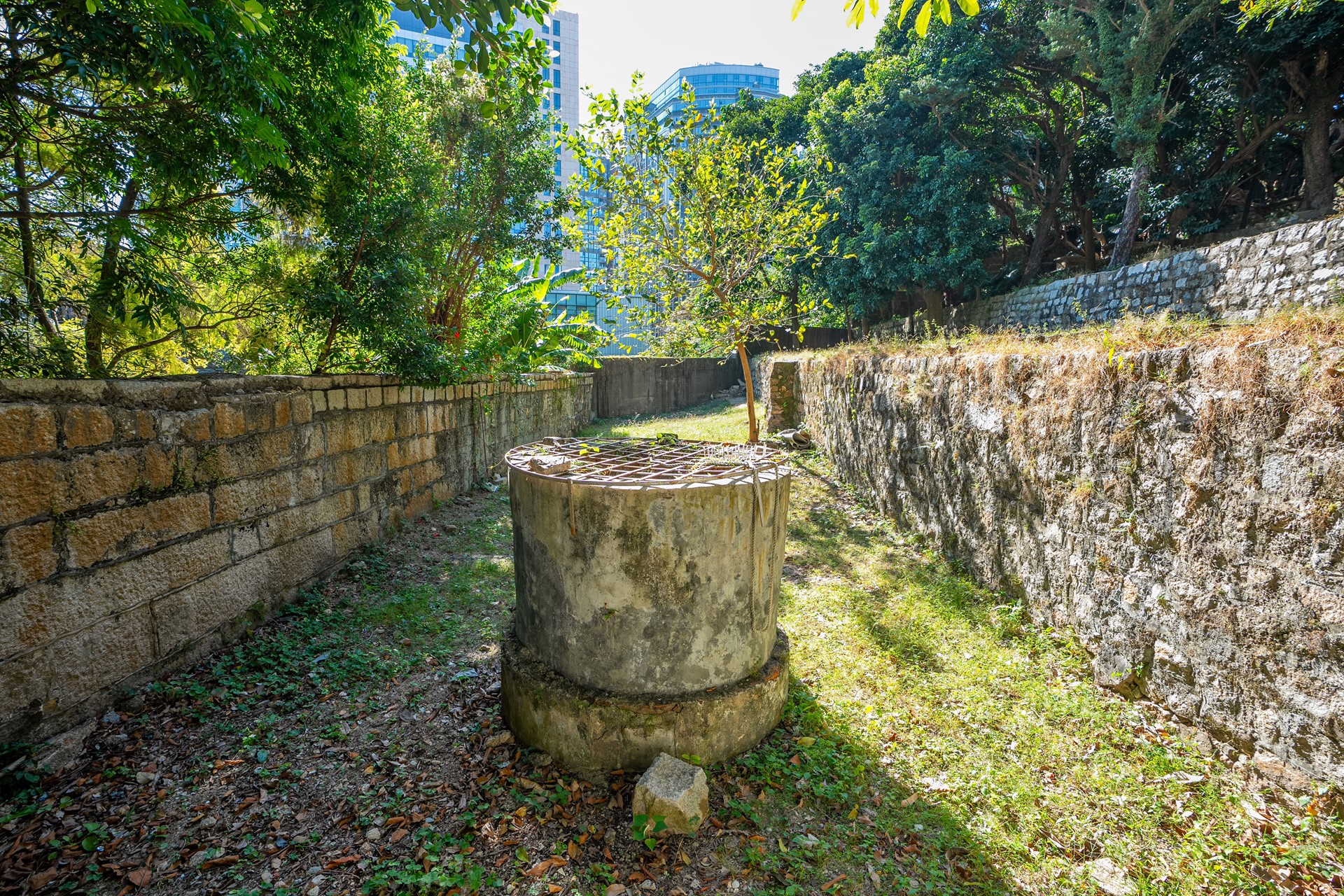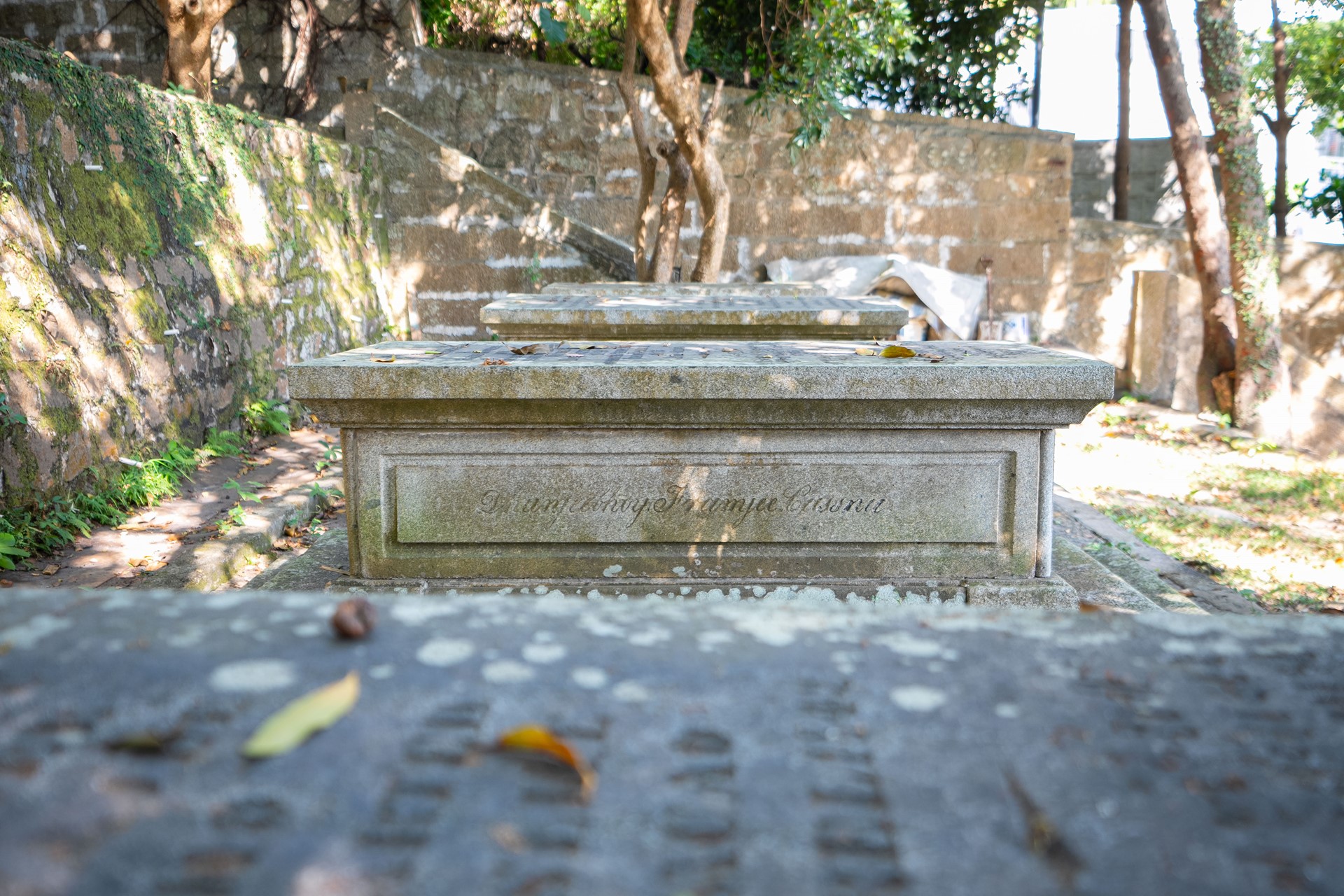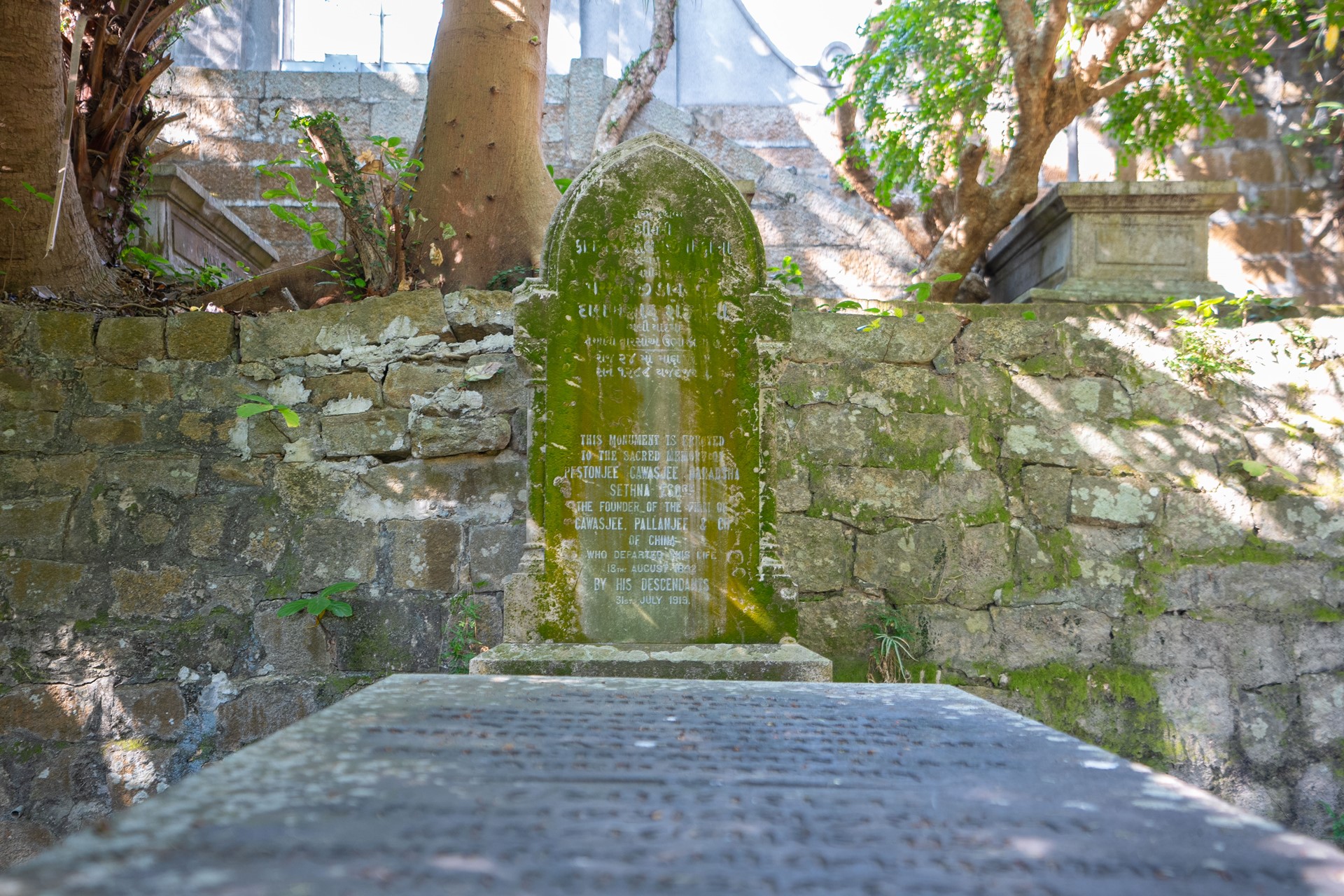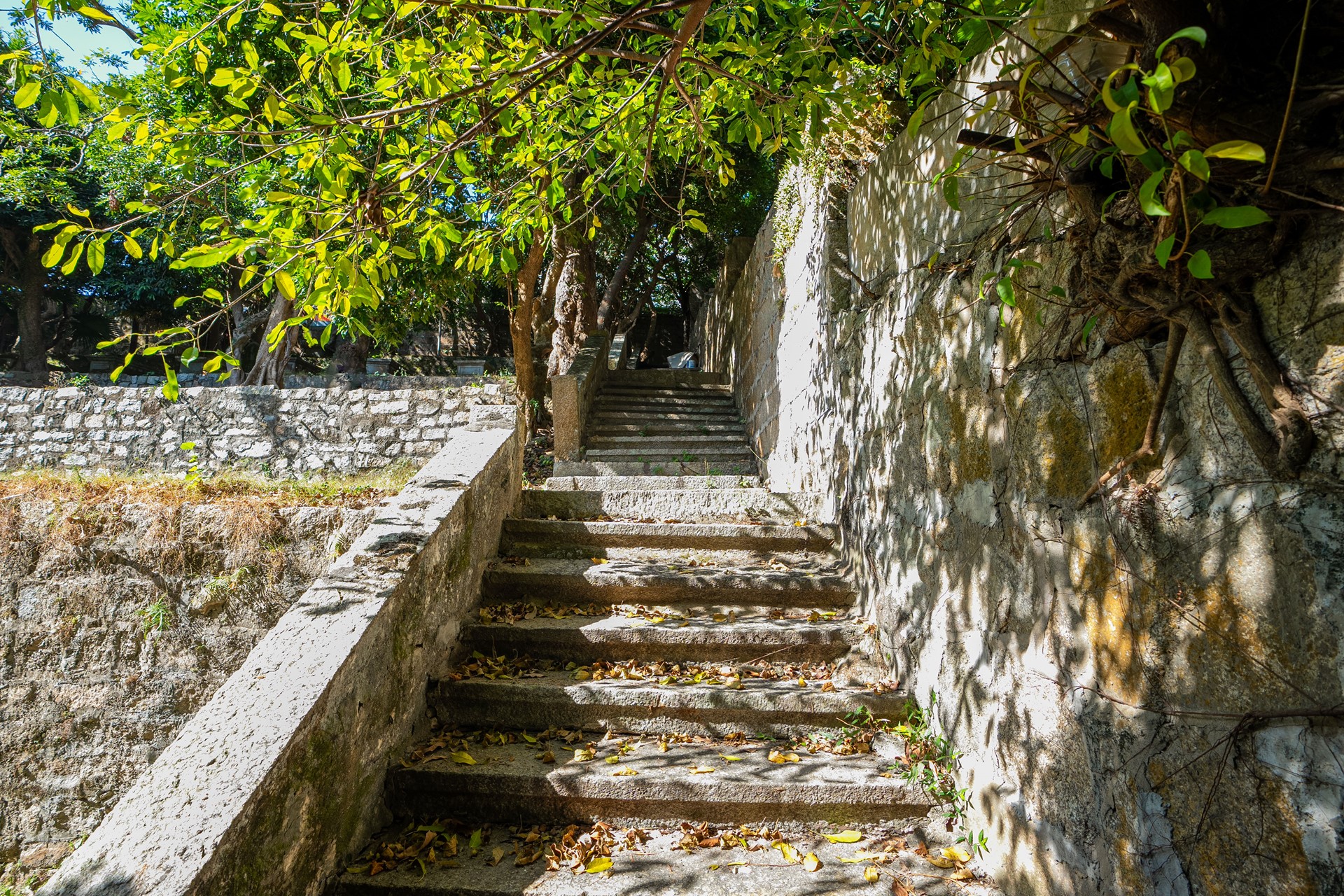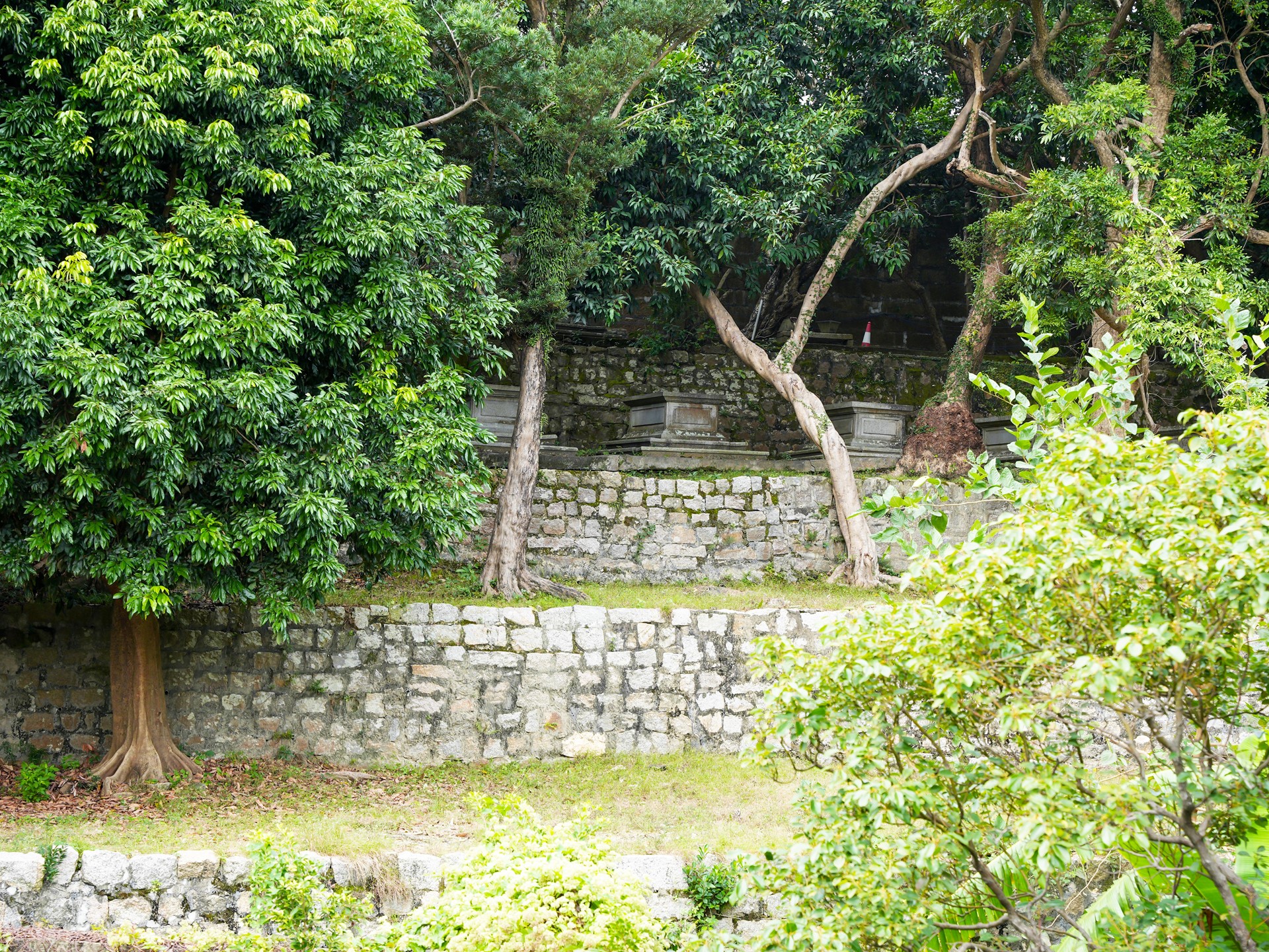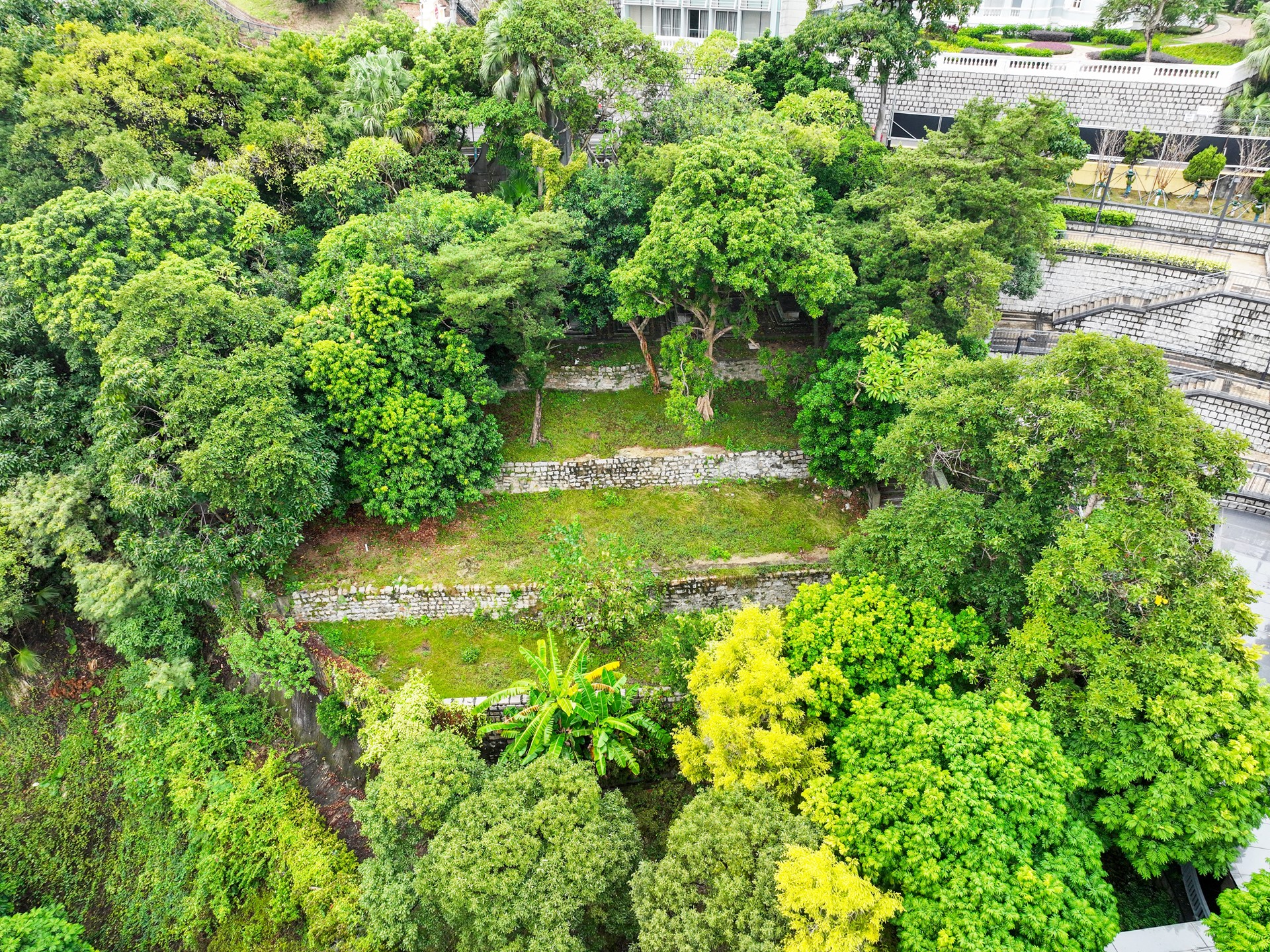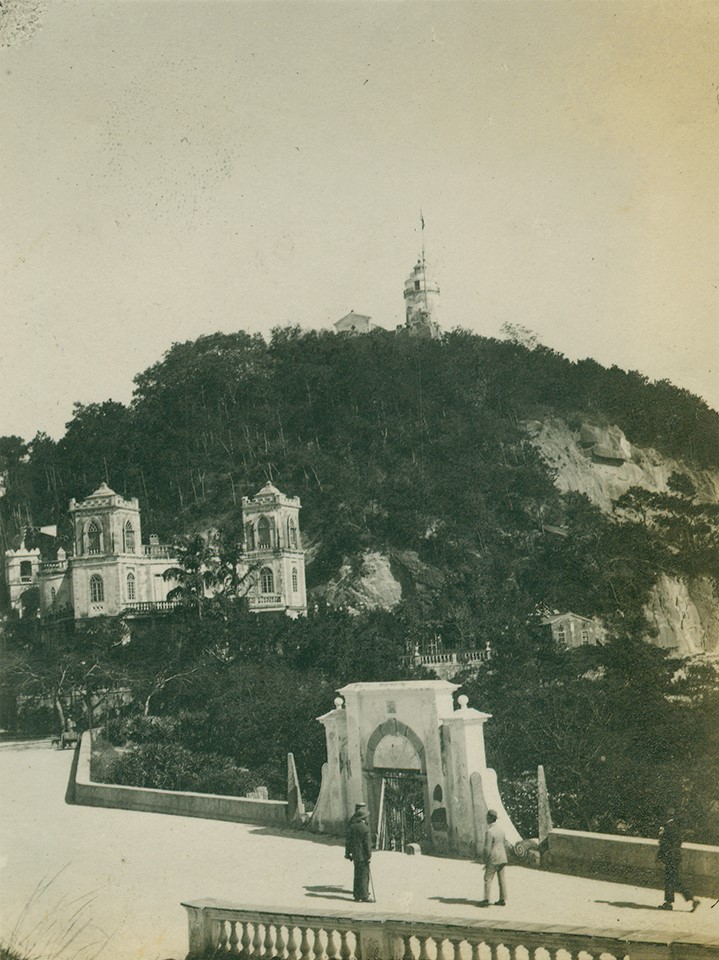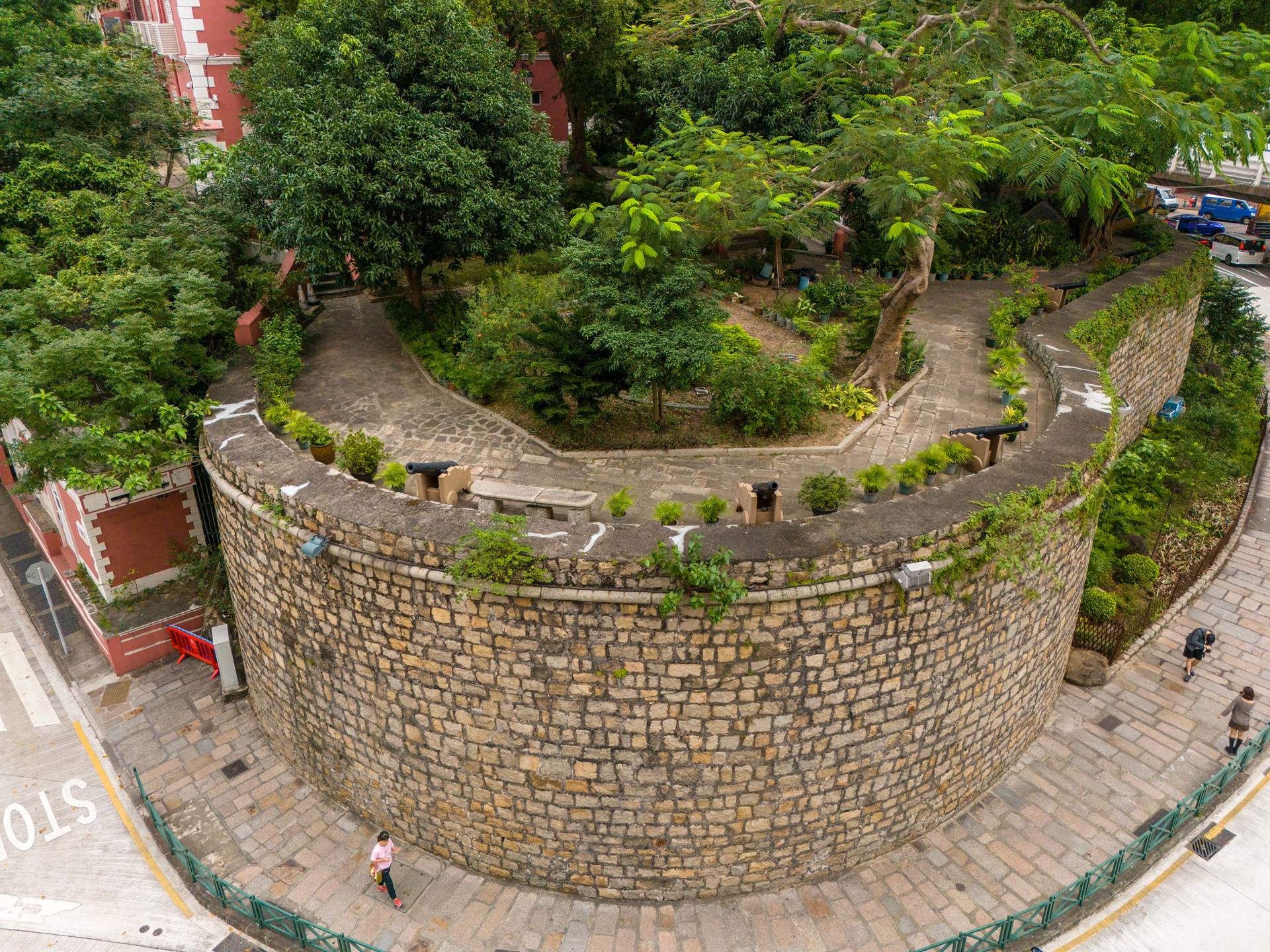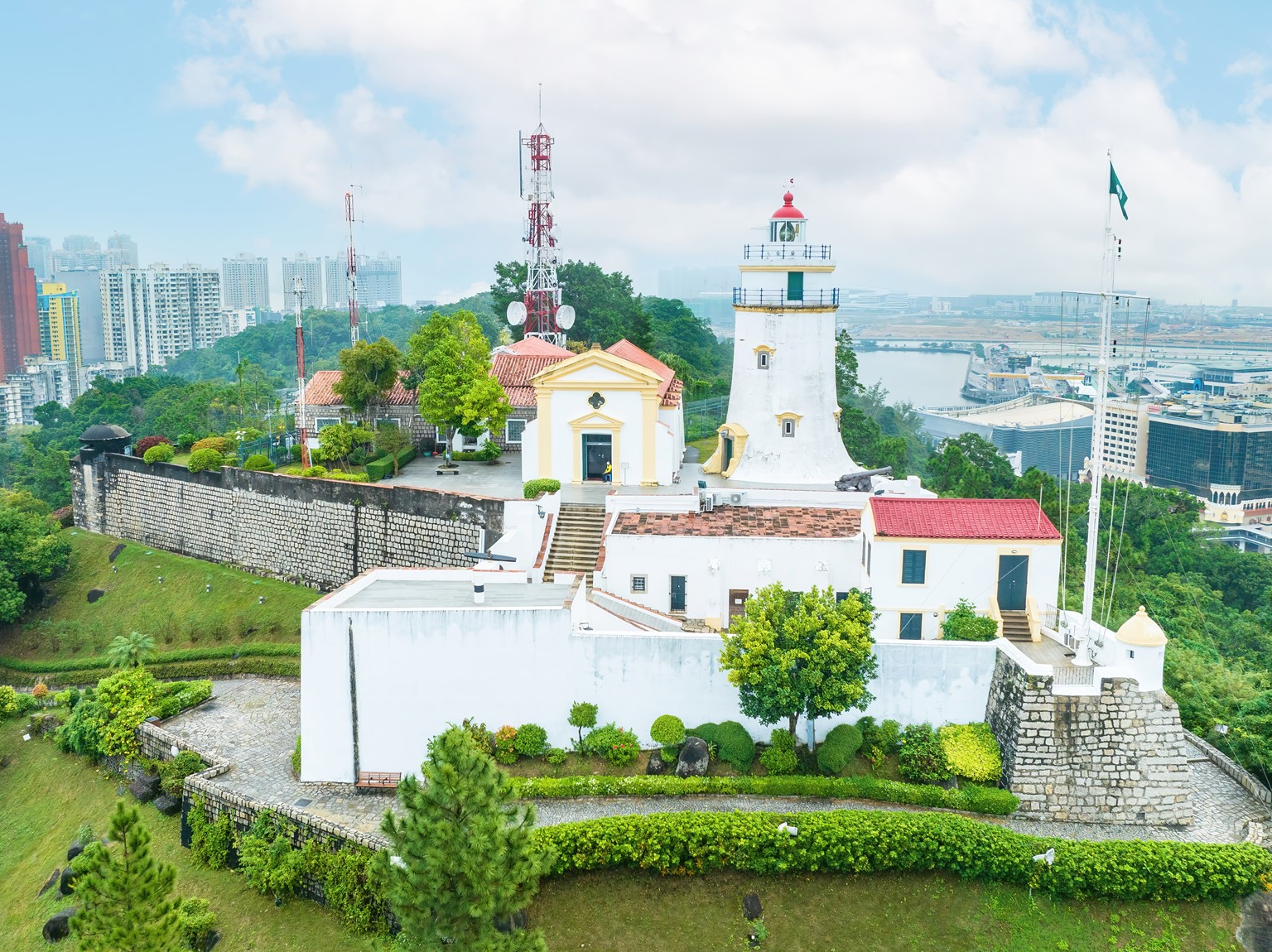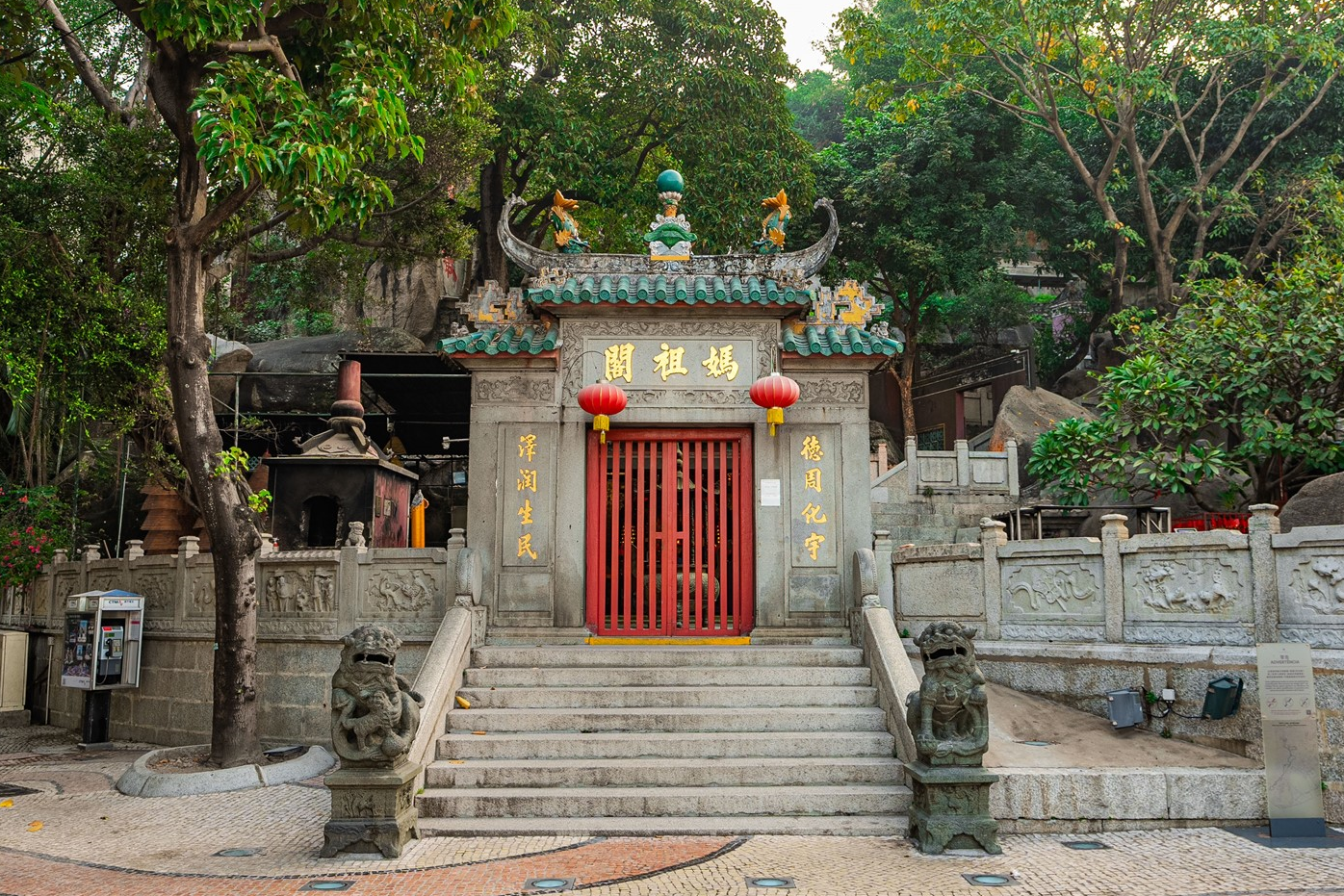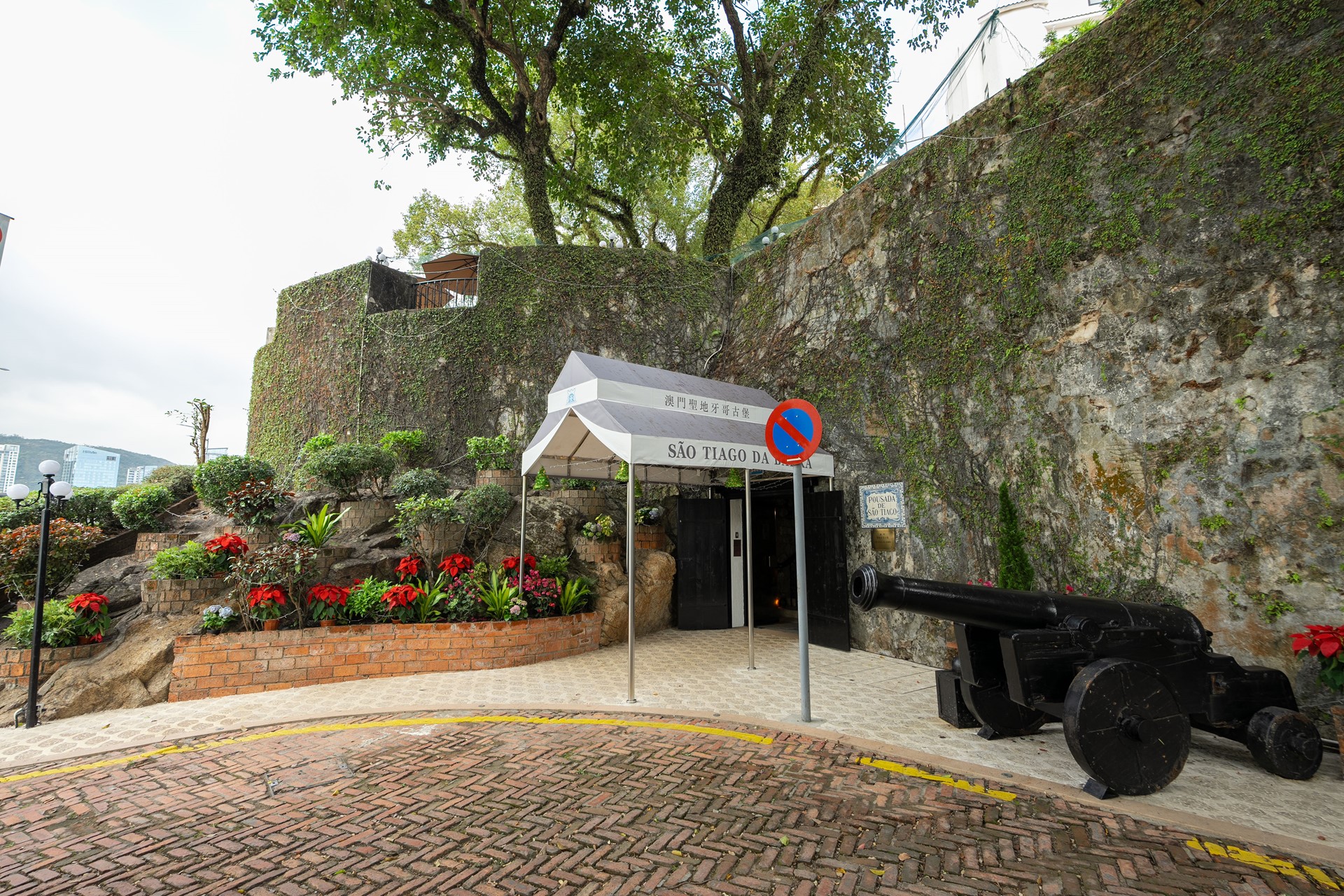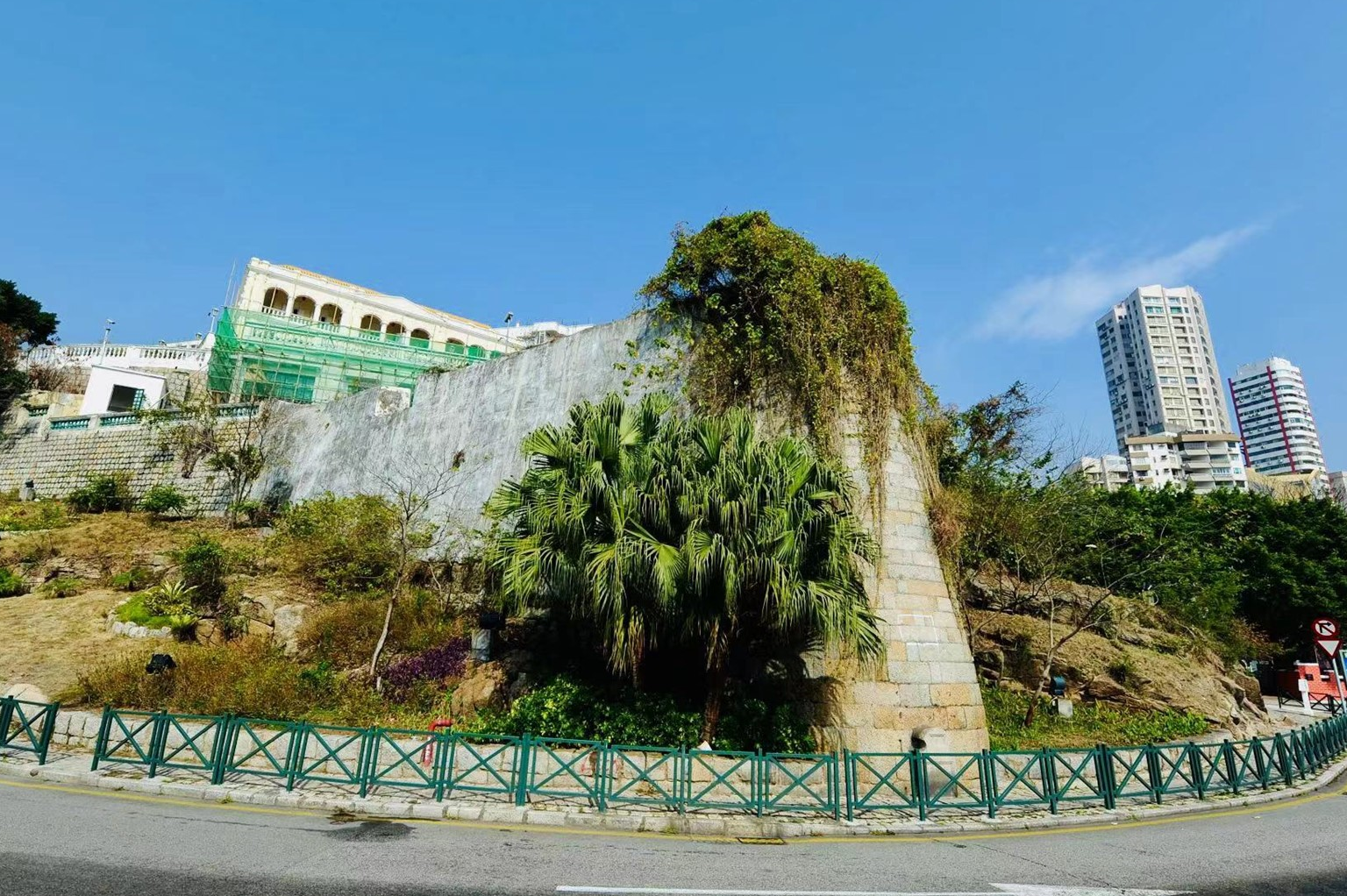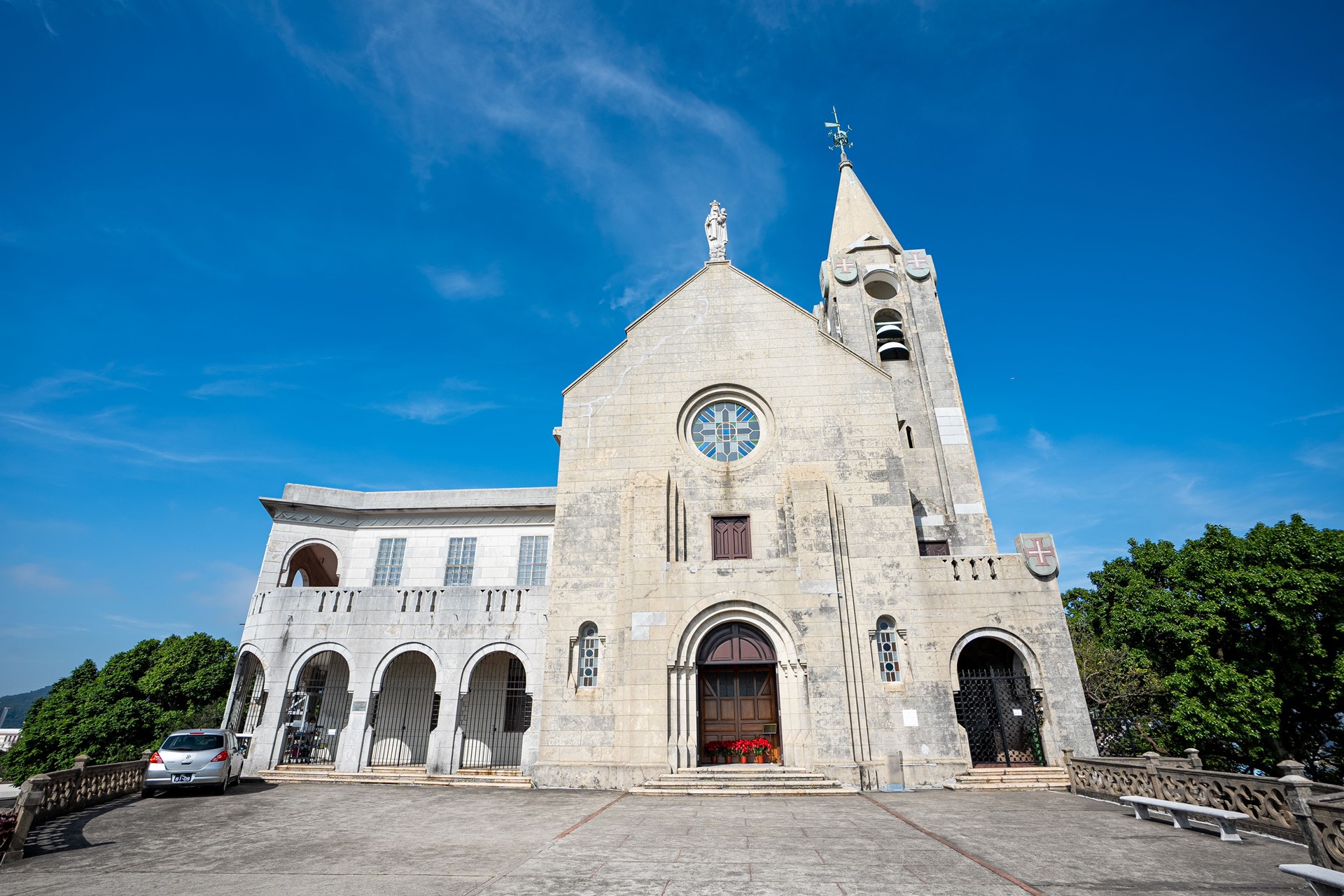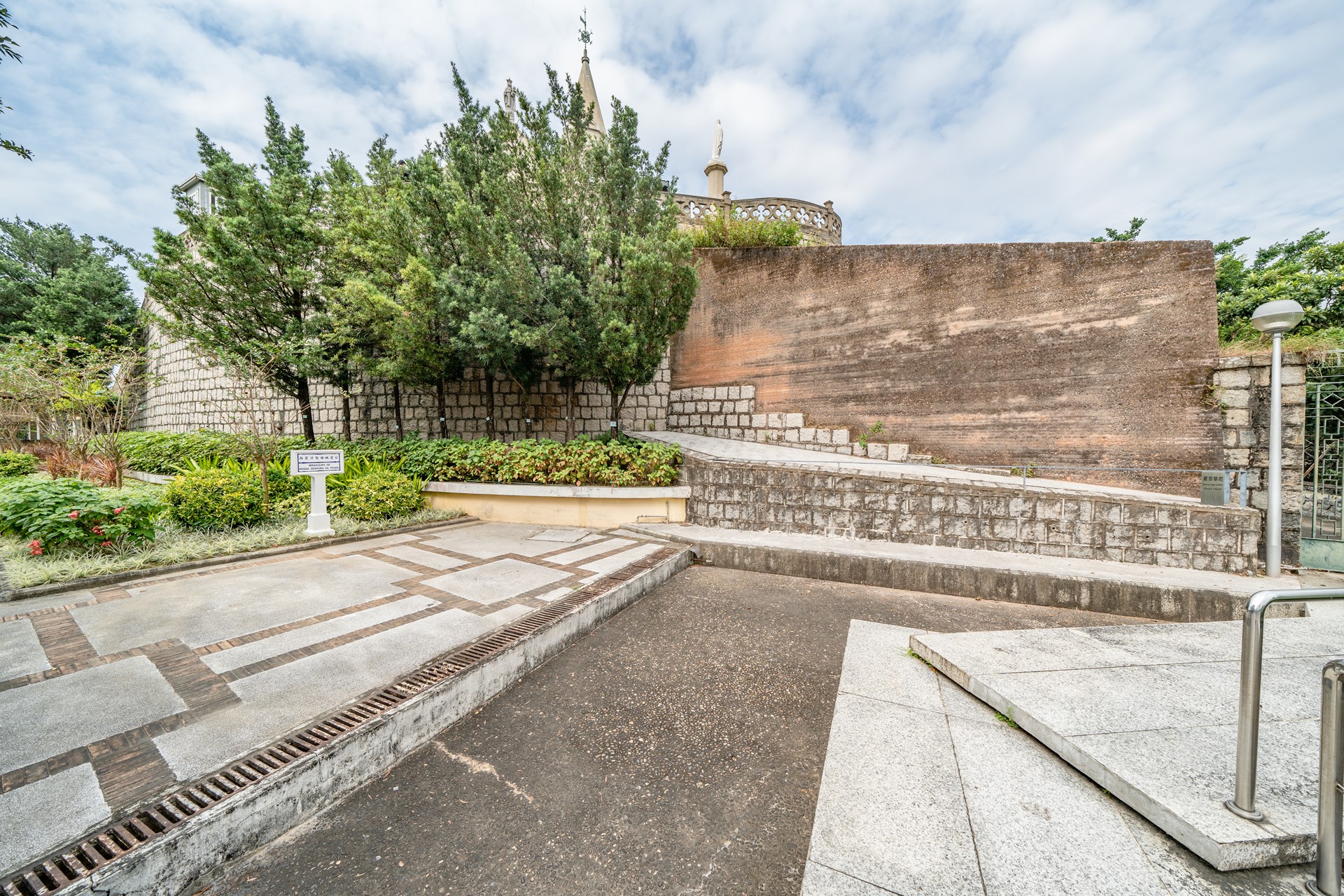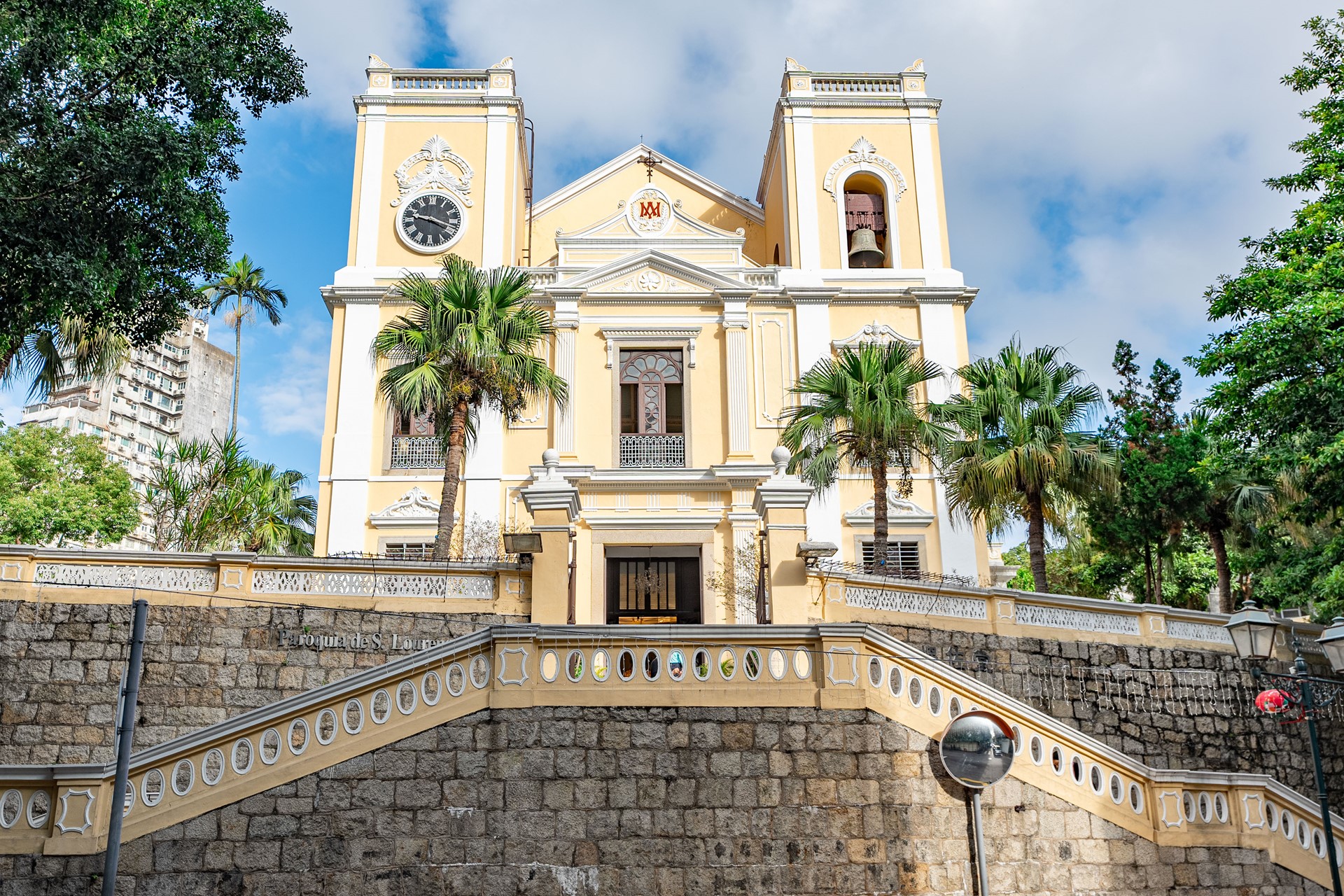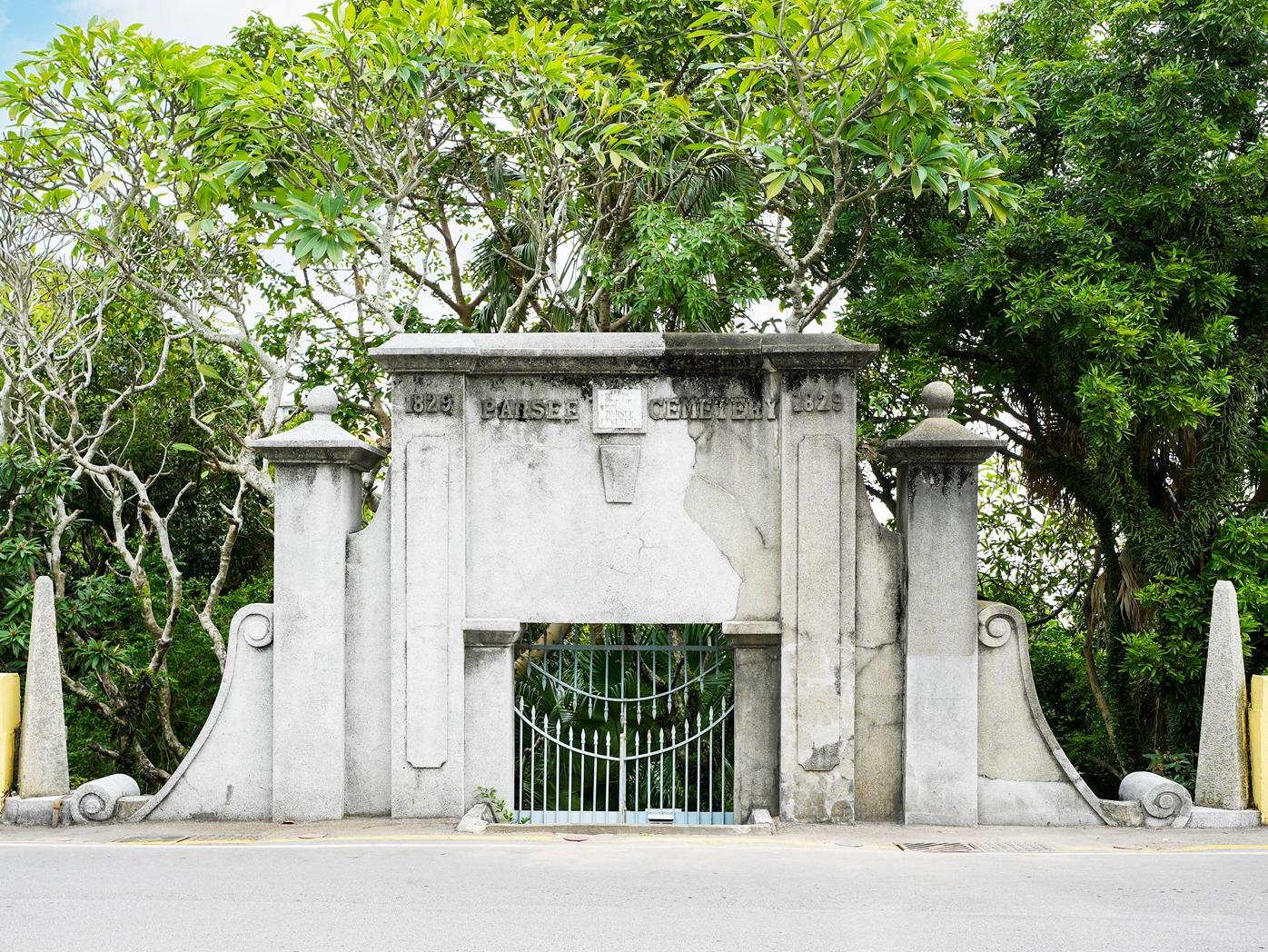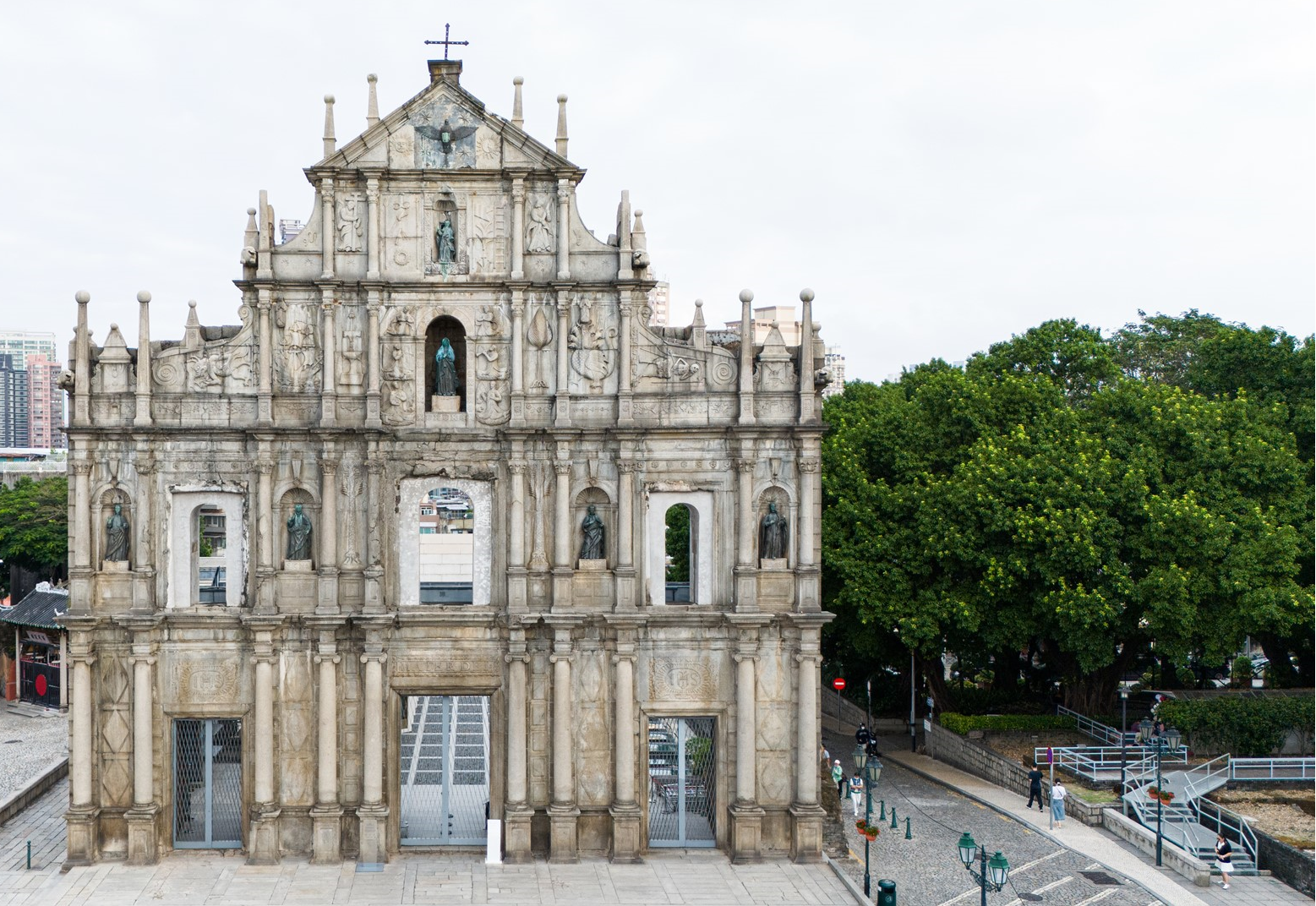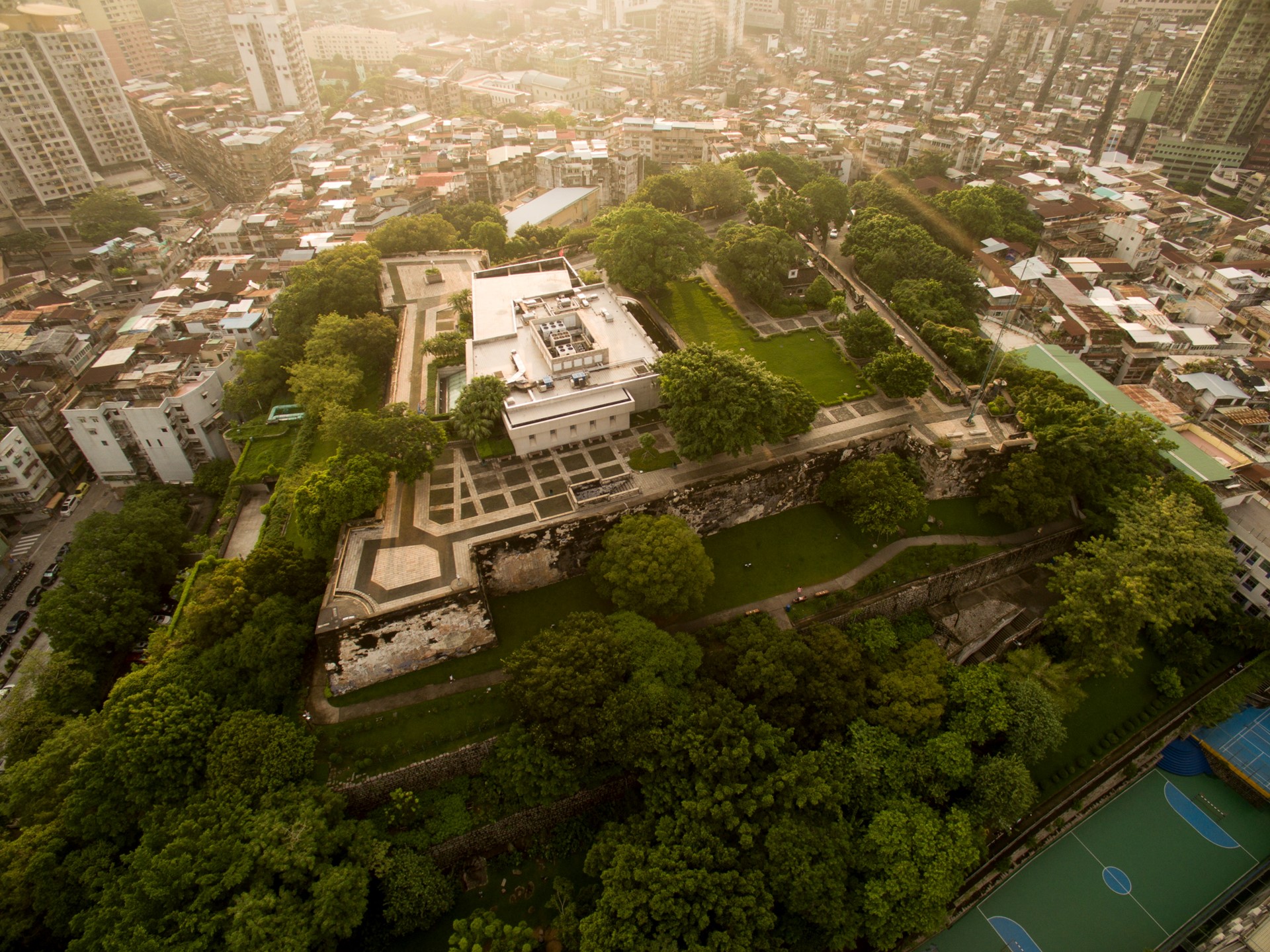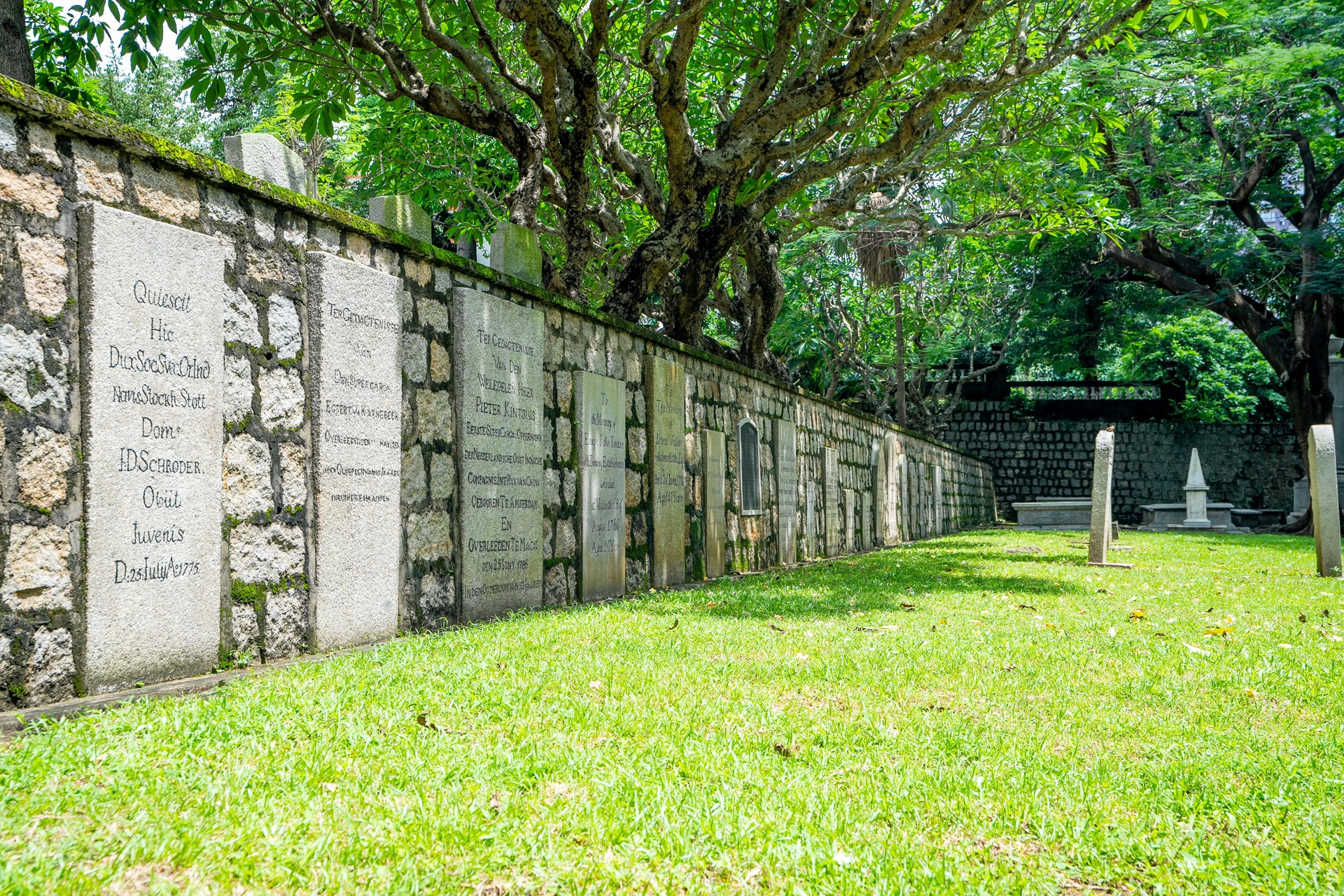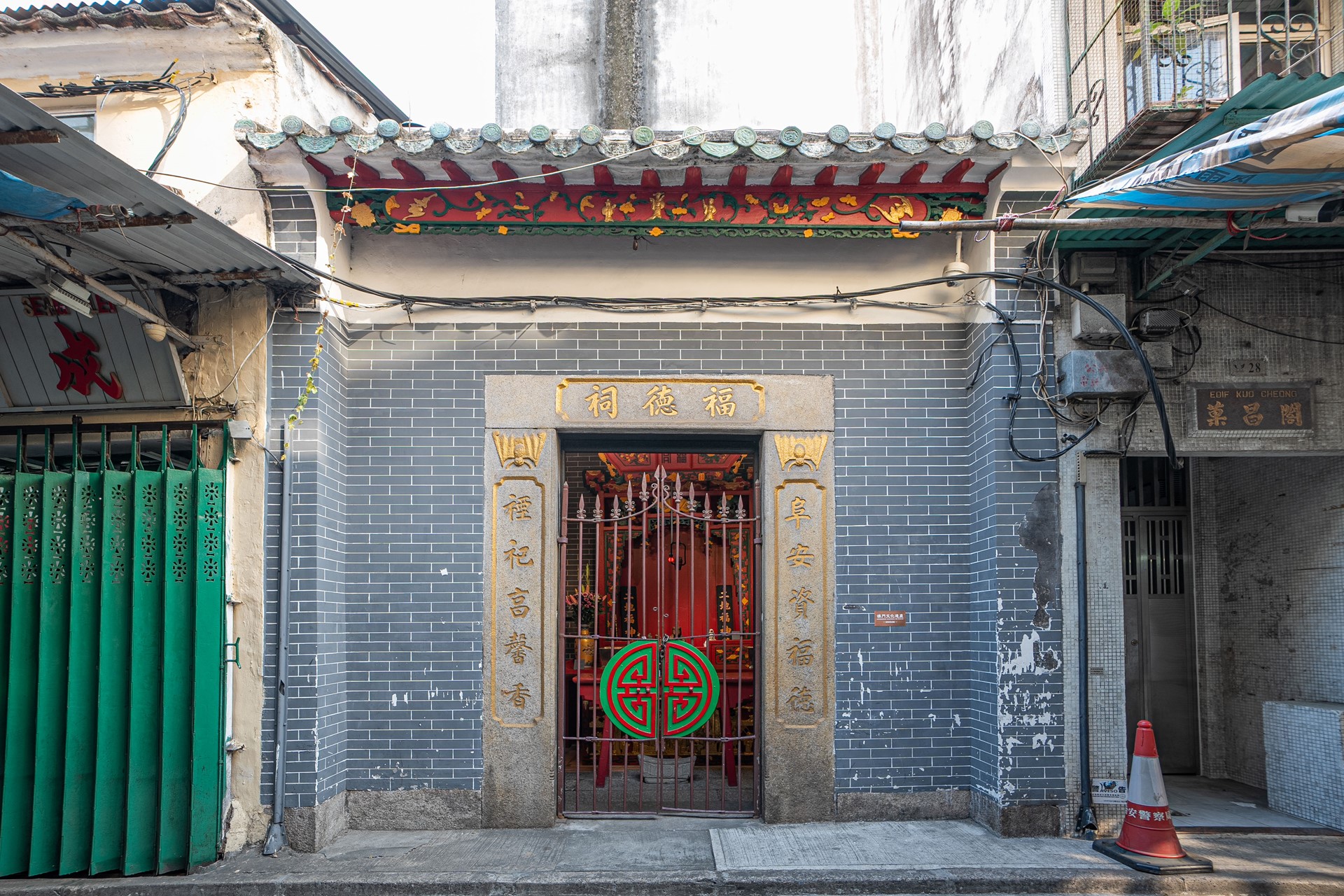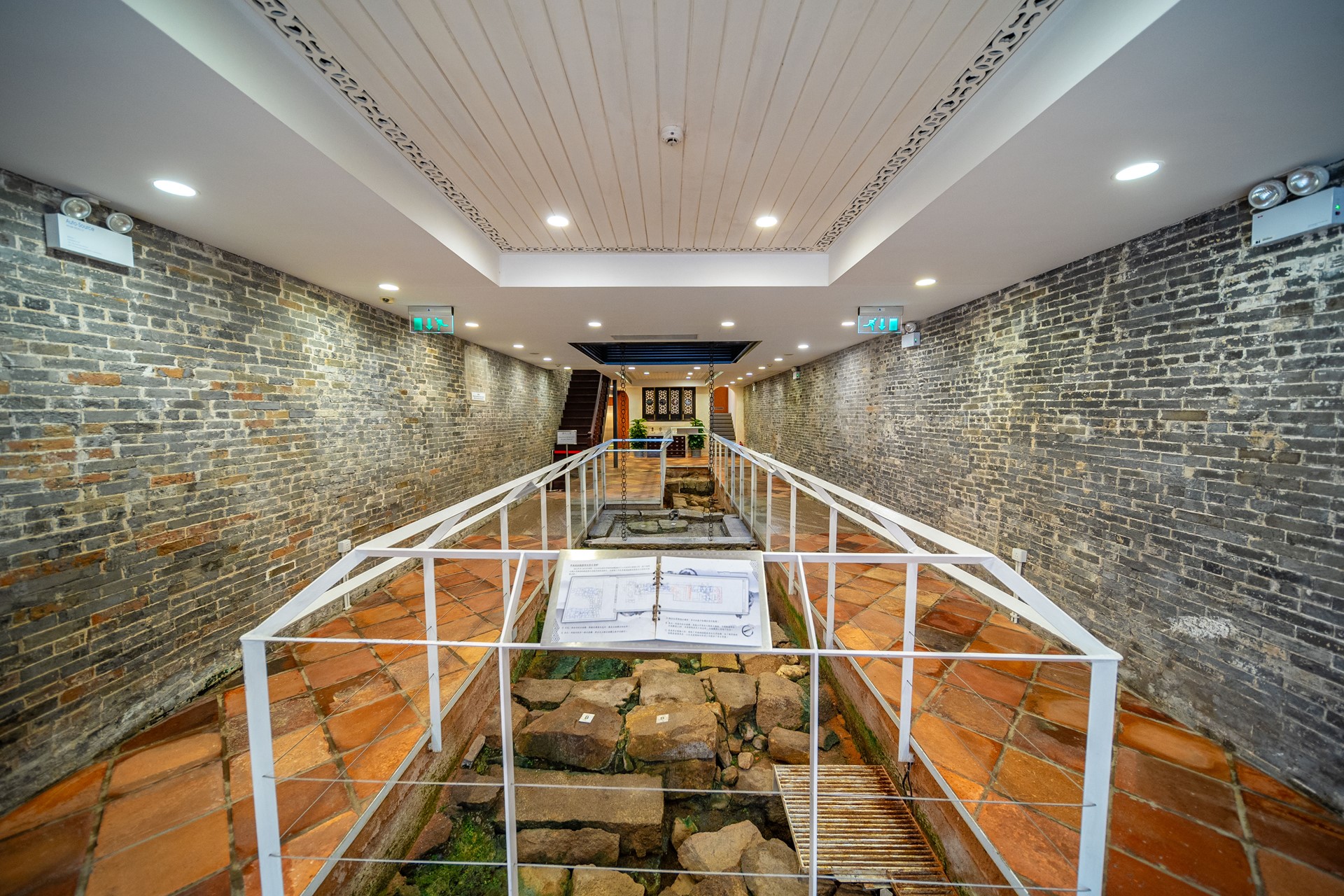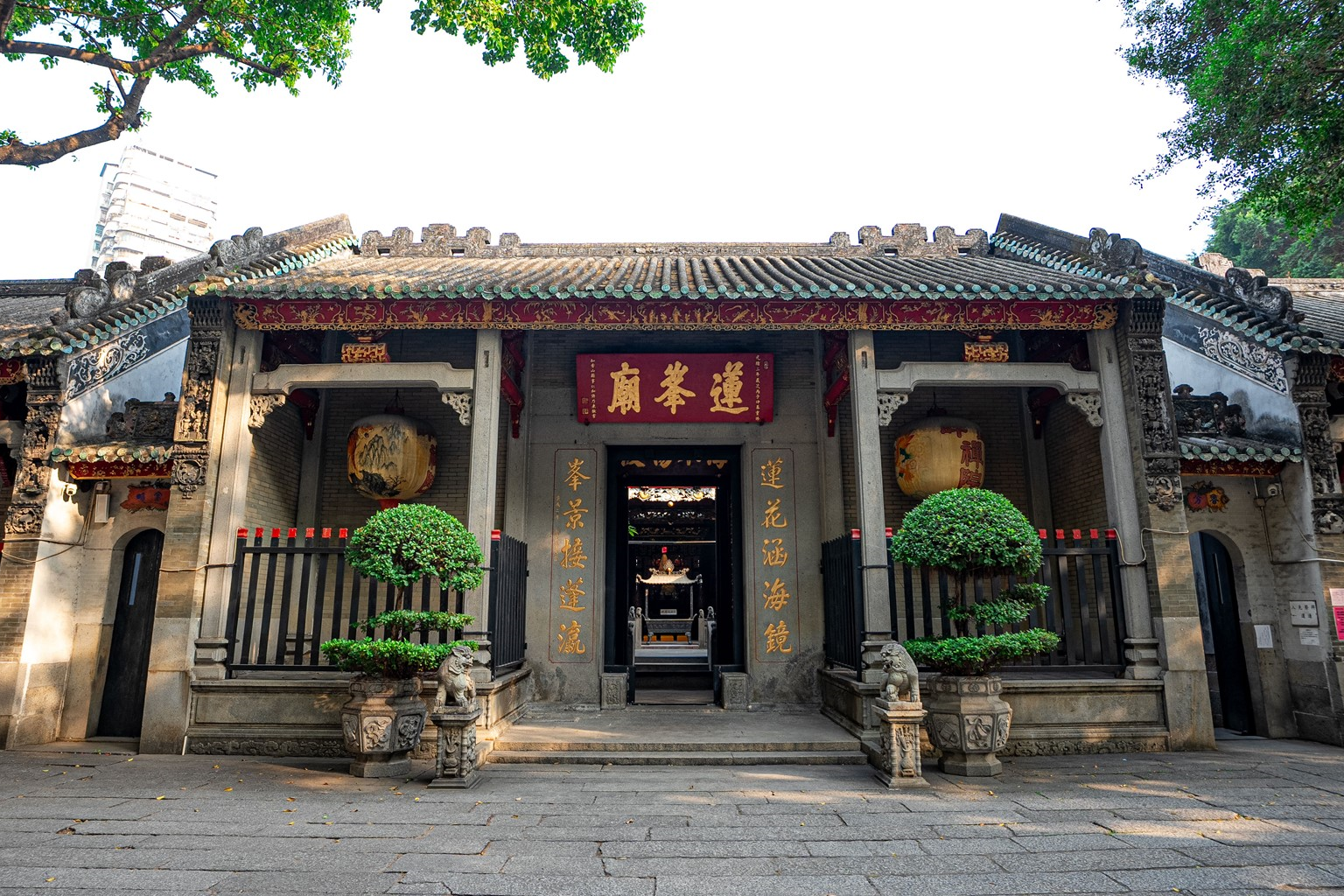Located in Guia Hill, the cemetery is contained by a stone wall, with the main entrance in Estrada dos Parses. Above the entrance gateway one finds the inscriptions of the construction year, 1829, and its designation in English, Parsee Cemetery. At the entrance, there is a trapezoidal staircase leading visitors into the cemetery area, which is surrounded by lush centenary trees in a tranquil setting, like a peaceful garden. The cemetery has 14 granite tombstones, respectively organized on the first and second levels and facing to east.
The Parsees is a minority community from India, followers of Zoroastrianism, which spread from Persia to India and around the world. In Chinese, the Parsees were popularly called “Bak Tou” (White-Head) and the Parsee Cemetery used to be designated “Bak Tou Cemetery”, because members of this community wore white turbans. Since Zoroastrians practiced open sky burials, the tombs are actually empty and without human remains inside. Each tomb is rectangular in shape, and has two small stepping bases, with the top of the tombs embellished with a small vaulted structure. All 14 tombs are the same size and material, reflecting the Parsees’ idea of equality in burial, without distinction between the rich and the poor, or separation of social castes.
Since the second half of 18th century, and originating from the western coast of India, the Parsees accompanied the Portuguese trade routes towards Macao and the Pearl River Delta and gradually grew wealthy here. As a result of the Qing government's policy of Canton System, which required foreign merchants to leave Canton (Guangzhou) during non-trading seasons, for their home countries or for a Macao sojourn, the Parsees settled in the city, where they built a Parsee community, that had some economic importance locally. On March 17, 1829, Cursetjee Framjee, a prominent merchant from Bombay, India, died in Macao at the age of 56. In recognition of his social status, the Parsee community made a request to the Portuguese administration of Macao to purchase a land plot for his burial. Later, the site became a cemetery for members of the Parsee community. Subsequently, following the Opium War period, most local Parsees moved to Hong Kong for commercial and trading activities, with some becoming prominent merchants after the establishment of Hong Kong as a port.
The Parsee Cemetery is an important testament to Macao's religious diversity and peaceful co-existence between Eastern and Western cultures. Due to its unique location along the Maritime Silk Road, many Parsees were attracted to trade and live here, thus playing a positive role in Macao's economy, and the Parsee Cemetery provides important historical evidence relating to the Qing dynasty period of the Maritime Silk Road in Macao. It’s also interesting to note that the Parsees liked wearing earrings, and were thus popularly nicknamed “Big Earholes”, due to their unique belief: “the bigger the earring, the wealthier the wearer”. And since the Parsees were involved in high-interest money lending business, the nickname “Big Earhole” gradually became a slang synonym for loan sharks in Cantonese culture.
Managed by the Board of Trustees of The Incorporated Zoroastrian Charity Funds of Hongkong, Canton and Macao, this cemetery is a private property, and therefore not open to the public.
